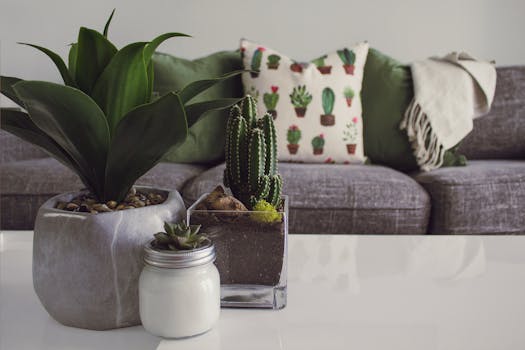Anticipate Changes in the Light in the Room Throughout the Day for Optimal Decor
Lighting plays a crucial role in interior design, influencing not only the aesthetics of a space but also the mood and functionality. As the sun moves across the sky, the quality and intensity of natural light change, impacting how colors and textures are perceived. Understanding these changes can help homeowners and designers create spaces that are not only beautiful but also harmonious and inviting. This article explores how to anticipate changes in room lighting throughout the day and how to optimize decor accordingly.
The Science of Natural Light
Natural light varies throughout the day due to the position of the sun, weather conditions, and seasonal changes. This variation can be categorized into three main phases:
- Morning Light: Soft and warm, morning light creates a gentle ambiance that can enhance the warmth of colors.
- Noon Light: Bright and direct, noon light can wash out colors and create harsh shadows, making it essential to choose decor that can withstand this intensity.
- Evening Light: Golden and soft, evening light adds a cozy feel to spaces, perfect for relaxation and social gatherings.
By understanding these phases, you can select decor that complements the natural light at different times of the day.
Choosing the Right Colors
The colors you choose for your decor can significantly impact how a room feels under varying light conditions. Here are some tips for selecting colors based on the time of day:
- Morning: Warm colors like soft yellows, peach, and light oranges can enhance the gentle morning light, creating a welcoming atmosphere.
- Noon: Neutral colors such as whites, grays, and beiges can help balance the harshness of noon light, preventing the space from feeling too stark.
- Evening: Rich, deep colors like burgundy, navy, and forest green can absorb the warm evening light, creating a cozy and intimate environment.
For example, a living room painted in a soft beige may feel warm and inviting in the morning but could appear washed out at noon. Adding accent pillows in deeper hues can help maintain visual interest throughout the day.
Utilizing Textures and Materials
The materials and textures you choose for your decor can also influence how light interacts with your space. Here are some considerations:
- Reflective Surfaces: Mirrors and glossy finishes can amplify natural light, making a room feel larger and brighter, especially during the darker hours of the day.
- Matte Finishes: These absorb light and can create a more subdued atmosphere, ideal for spaces meant for relaxation.
- Natural Materials: Wood, stone, and textiles can add warmth and depth, enhancing the overall feel of a room as light changes.
For instance, a room with wooden furniture and soft textiles can feel inviting in the morning and evening, while a room with too many reflective surfaces may feel overwhelming during noon.
Case Study: The Impact of Window Treatments
Window treatments are another critical element in managing natural light. A case study conducted by the American Society of Interior Designers found that homes with strategically placed window treatments not only improved energy efficiency but also enhanced the overall aesthetic appeal of the space. Here are some options:
- Sheer Curtains: Allow soft light to filter in while providing privacy, ideal for morning and evening.
- Blackout Curtains: Useful for controlling light during the day, especially in bedrooms or media rooms.
- Blinds: Offer flexibility to adjust light levels throughout the day.
By selecting the right window treatments, homeowners can effectively manage the light in their rooms, enhancing both comfort and decor.
Conclusion
Anticipating changes in natural light throughout the day is essential for creating optimal decor. By understanding the science of light, choosing the right colors, utilizing textures and materials, and implementing effective window treatments, you can design spaces that are not only visually appealing but also functional and inviting. Remember, the key to successful interior design lies in harmonizing your decor with the natural rhythms of light, ensuring that your home feels welcoming at any time of day.
